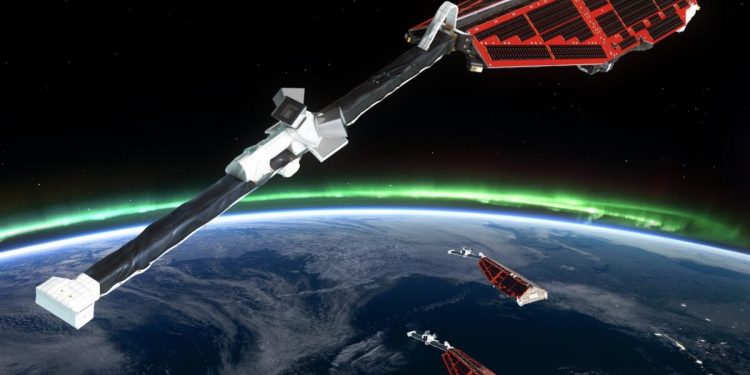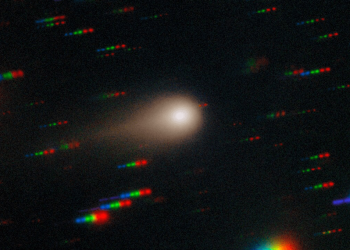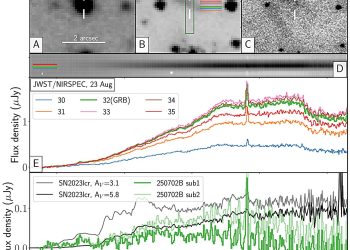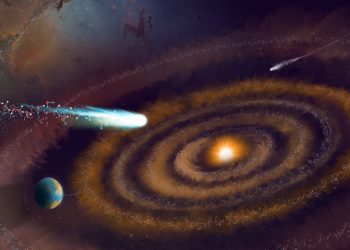The weak spot in Earth’s magnetic field, a region in the South Atlantic where the field strength is significantly reduced compared to its surrounding area, has expanded by an area almost equivalent to the size of the European continent over the past 11 years.
Using data from the European Space Agency’s (ESA) Swarm satellites, scientists revealed that the South Atlantic anomaly has grown significantly since 2014. In a recent study published in Physics of the Earth and Planetary Interiors, the team of scientists links this development to strange patterns at the boundary between Earth’s liquid layer, which lies above the solid inner core, and its rocky mantle, the layer between the crust and the outer core.
“The South Atlantic anomaly is not just one block,” Chris Finlay, professor of geomagnetism at the Technical University of Denmark and lead author of the study, said in a statement. “There is something special happening in this region that is weakening the field more intensely.”
This is the place
The Earth’s magnetic field is essential to life on our planet. It protects Earth from cosmic radiation and acts as a shield against solar wind, keeping our atmosphere stable and preventing liquid water and other gases from being eroded by the stream of charged particles emitted by the Sun.
Scientists first identified the South Atlantic anomaly, better known as the weak spot, in the late 1950s, when the first satellites began measuring the Earth’s magnetic field. Initial observations revealed that radiation levels were unusually high in one particular area of the South Atlantic, meaning the magnetic field there was weaker than in surrounding regions.
Satellites flying over the region experience higher radiation doses than other areas, making studying the anomaly a crucial part of maintaining the safety of space missions, according to the ESA.
“Normally, we would expect to see magnetic field lines coming out of the core of the southern hemisphere,” Finlay said. “But beneath the South Atlantic anomaly, we see unexpected areas where the magnetic field, instead of leaving the core, returns to it.”
Swarm data revealed that one of these areas is moving westward over Africa, contributing to the weakening of the South Atlantic anomaly in this region. The data also highlights two points in the Northern Hemisphere where the Earth’s magnetic field is particularly strong, one around Canada and the other around Siberia, which have experienced varying results since Swarm began observing them.
The strong point around Canada has weakened, shrinking by 0.65% of Earth’s area, which is almost the size of India. In contrast, the strong region of Siberia grew by 0.42% of Earth’s area, or about the size of Greenland.
“When you’re trying to understand the Earth’s magnetic field, it’s important to remember that it’s not a simple dipole, like a bar magnet,” Finlay said. “Only by having satellites like Swarm can we fully map this structure and see how it evolves.”
ESA’s Swarm satellite constellation was launched in 2013 to study the complexities of the magnetic field. The mission uses three satellites, named Alpha, Bravo and Charlie, to measure magnetic signals coming from the Earth’s core, as well as the crust, oceans and parts of its atmosphere.









